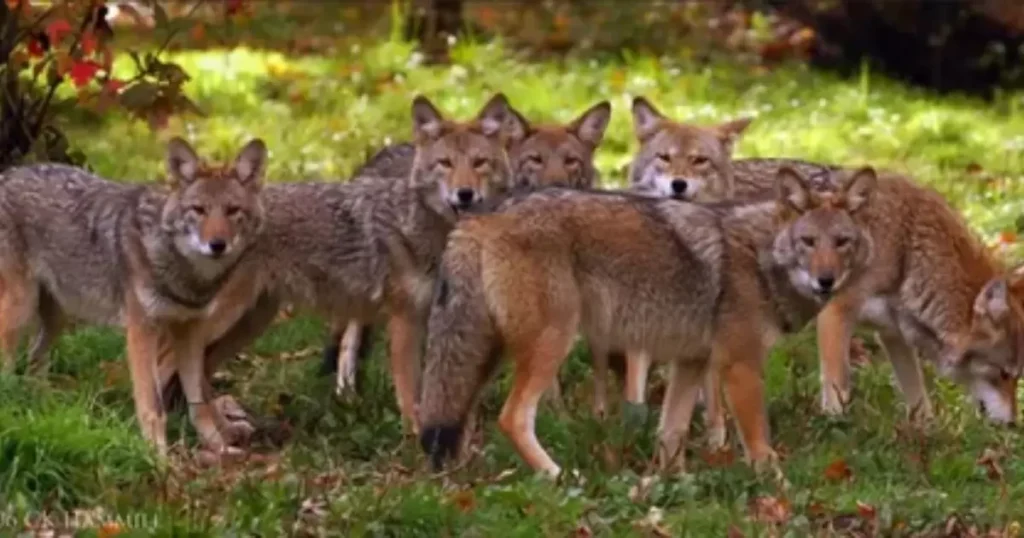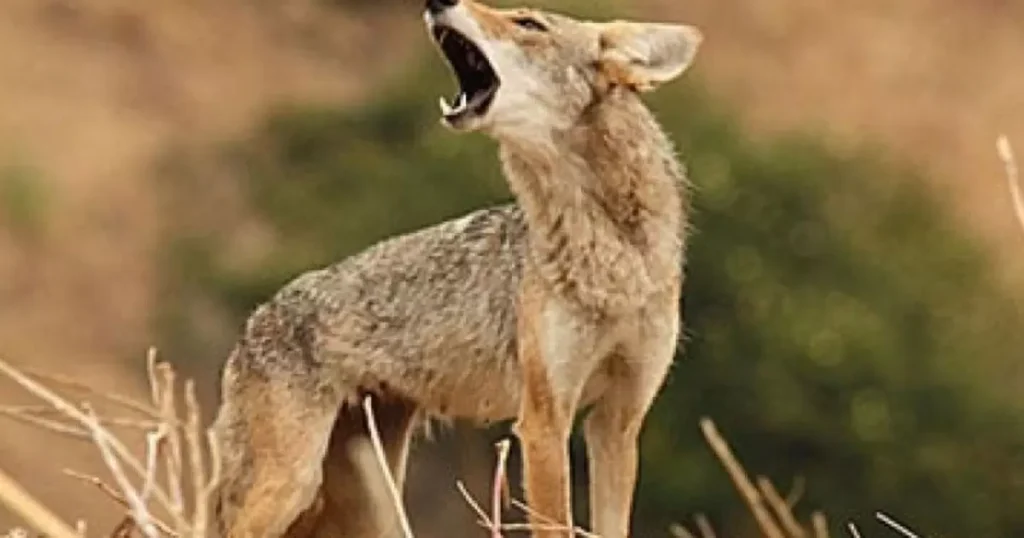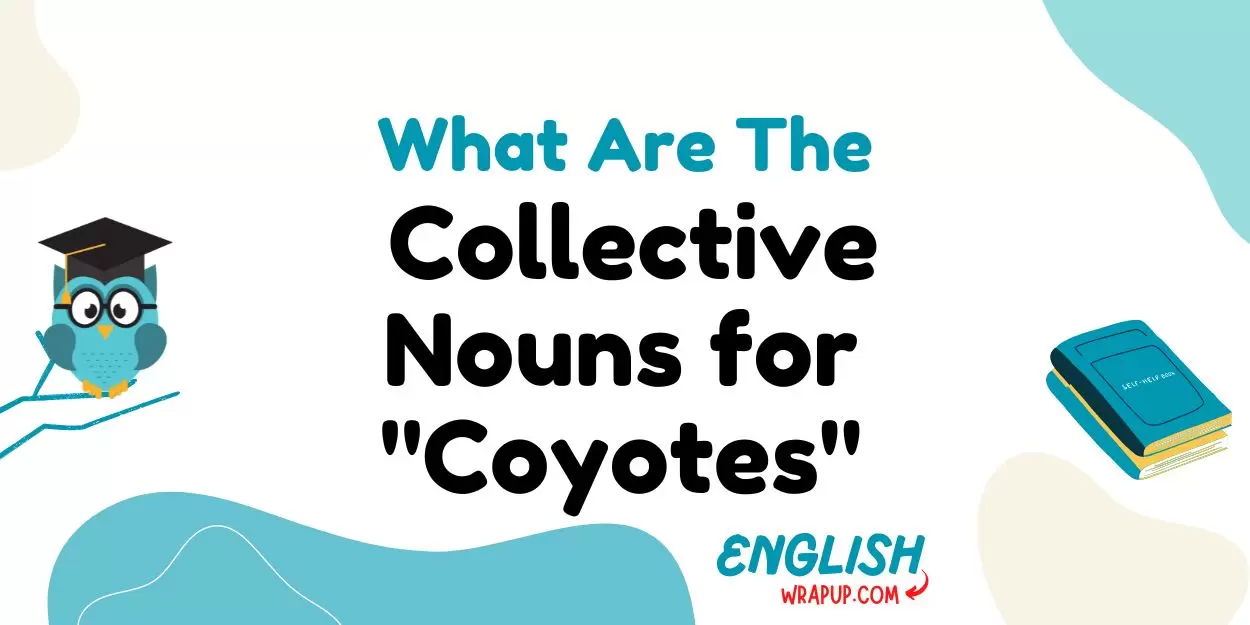Coyotes, the elusive and adaptable members of the canine family, roam the wild landscapes of North and Central America. When observed together, these intelligent creatures are described using various collective nouns, each offering insight into their social structure and behavior.
In this article, we will explore the concept of collective nouns and delve into some intriguing examples specifically related to coyotes.
What Are Collective Nouns?
Collective nouns are words used to describe a group of individuals or things considered as a single entity. These nouns simplify our language and provide a more vivid and interesting way to refer to collections of objects, animals, or people.
For example, instead of saying “a group of birds,” we can say “a flock of birds,” which is more expressive and efficient.
Best Collective Nouns for Coyotes
- A pack of coyotes
- A band of coyotes
- A troop of coyotes
- A route of coyotes
- A sneer of coyotes
- A trick of coyotes
- A warren of coyotes
- A plague of coyotes
- A charm of coyotes
- A coterie of coyotes
Let’s explore each of these collective nouns in more detail.
A Pack of Coyotes
Explanation
A “pack of coyotes” refers to a group of coyotes that live and hunt together, typically led by an alpha pair.

Scenario
In the moonlit desert, a pack of coyotes howled in unison, their voices echoing across the barren landscape.
A Band of Coyotes
Explanation
A “band of coyotes” denotes a loosely-knit group of coyotes, often seen traveling together in search of food or territory.
Scenario
As dusk fell, a band of coyotes emerged from the forest, their silhouettes moving gracefully against the fading light.
A Troop of Coyotes
Explanation
A “troop of coyotes” emphasizes the organized and coordinated movement of coyotes, similar to military units.
Scenario
The troop of coyotes stealthily approached the riverbank, their keen senses alert for any sign of prey.
A Route of Coyotes
Explanation
A “route of coyotes” suggests the well-traveled paths and territories established by coyotes as they move across the landscape.
Scenario
The hikers stumbled upon a route of coyotes while exploring the wilderness, their tracks marking the established trails
What Are The Collective Nouns for “Tigers”
A Sneer of Coyotes
Explanation
A “sneer of coyotes” reflects the sly and mischievous nature of coyotes, often seen when they display their characteristic grins.
Scenario
The campers heard the unmistakable sounds of a sneer of coyotes, their eerie laughter sending shivers down their spines.

A Trick of Coyotes
Explanation
A “trick of coyotes” highlights the playful and clever antics of coyotes, especially when they engage in social interactions or hunting strategies.
Scenario
The biologist observed a trick of coyotes as they worked together to outsmart a herd of deer, employing ingenious diversion tactics.
A Warren of Coyotes
Explanation
A “warren of coyotes” describes a densely populated area where coyotes congregate, often for breeding or communal activities.
Scenario
The photographer stumbled upon a warren of coyotes, their den site bustling with activity as pups played under the watchful eyes of adults.
A Plague of Coyotes
Explanation
A “plague of coyotes” suggests an overabundance or invasion of coyotes in a particular area, often causing disruption to ecosystems.
Scenario
The rancher struggled to deal with a plague of coyotes that decimated his livestock, prompting calls for predator control measures.
A Charm of Coyotes
Explanation
A “charm of coyotes” conveys the charismatic and alluring qualities of coyotes, despite their reputation as predators.
Scenario
The wildlife enthusiasts marveled at the charm of coyotes as they observed the graceful movements and keen intelligence of the animals.
A Coterie of Coyotes
Explanation
A “coterie of coyotes” suggests a small, exclusive group of coyotes that share a close bond and social hierarchy.
Scenario
The researchers observed a coterie of coyotes as they interacted with subtle gestures and complex vocalizations, indicating their tight-knit relationships.
Interesting Facts About Coyotes
Coyotes are highly adaptable predators found in a variety of habitats, including forests, grasslands, and urban areas. They play a crucial role in ecosystems by controlling populations of rodents and other small mammals.
Despite their elusive nature, coyotes are known for their vocalizations, including howls, yips, and barks, which serve as communication signals within their social groups.
Final Thought
Collective nouns offer a unique way to describe groups of objects, animals, or people, providing insight into their behavior and interactions.
The collective nouns for coyotes not only paint a vivid picture of their social dynamics but also highlight the complexity and diversity of these fascinating creatures.
Next time you encounter a group of coyotes, think about the various ways you can describe them and appreciate the richness they bring to our language.

I’m Olivia Martinez, the educational mind behind “English WRAP Up.” I’ve had a blast teaching and grading English tests like TOEFL, IELTS, BULATS, FCE, CAE, and PTEG. At English WRAP Up, we’re dedicated to turning your exam preparation into a success story. Let’s make your English skills shine—join me in the educational journey at English WRAP Up!



